I have a database of cash register transactions. The records are split by Products in a Basket:
Date Hour Cust Prod Basket Spend
1| 20160416 8 C1 P1 B2 10
2| 20160416 8 C1 P2 B2 20
3| 20160115 15 C1 P3 B1 30
4| 20160115 15 C1 P2 B1 50
5| 20161023 11 C1 P4 B3 60
I would like to see:
DaysSinceLastVisit Cust Basket Spend
NULL C1 B1 30
92 C1 B2 80
190 C1 B3 60
AND
AvgDaysBetweenVisits Cust AvgSpent
141 C1 56.57
I can't figure out how to perform aggregate functions on Dates during a GROUP BY. All the other posts on SO seem to have 2 for start/end dates [1] [2] [3].
Here's what I have tried so far:
SELECT SUM(DATE(Date)), Cust, Basket, SUM(Spend) FROM 'a' GROUP BY CUST_CODE,BASKET # Sums the numeric values
SELECT DIFF(DATE(Date)), Cust, Basket, AVG(Spend) FROM 'a' GROUP BY CUST_CODE,BASKET # DIFF/DIFFERENCE not a function
Also, it should be noted that I'm running this on r with sqldf, which uses SQLite syntax. However, I'd prefer an SQLite solution.

